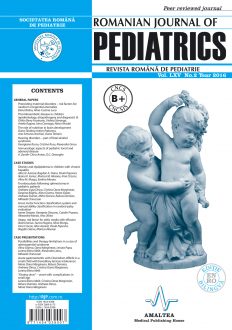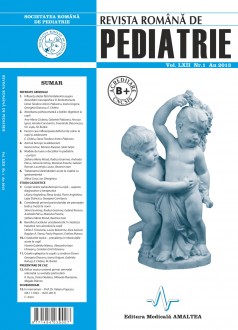SELECT ISSUE

Indexed

| |

|
|
|
| |
|
|
|

|
|
|
|
|
|
|
HIGHLIGHTS
National Awards “Science and Research”
NEW! RJP has announced the annually National Award for "Science and Research" for the best scientific articles published throughout the year in the official journal.
Read the Recommendations for the Conduct, Reporting, Editing, and Publication of Scholarly work in Medical Journals.
The published medical research literature is a global public good. Medical journal editors have a social responsibility to promote global health by publishing, whenever possible, research that furthers health worldwide.
OBEZITATEA SI DISLIPIDEMIILE LA COPILUL CU HEPATITA CRONICA
Alice N. Azoicai, Alina M. Murgu, Bogdan A. Stana, Evelina Moraru, Ileana K. Ioniuc, Irina Criscov, Monica M. Alexoae and Paula Popovici
REZUMAT
Asocierea hepatitelor cronice cu diverse tipuri de dislipidemii este o realitate nu numai pentru pacientul obez, la care ne aşteptăm să găsim hipercolesterolemii sau/şi hipertrigliceridemii, dar şi pentru copilul normoponderal. Cauzele acestei asocieri sunt multiple, însă trebuie să avem în vedere, în primul rând, predispoziţia familială şi transmiterea genetică a unor forme de dislipidemii. În acelaşi timp, unele dislipidemii sunt secundare hepatopatiilor cronice, astfel că se formează un cerc vicios în care tratamentul de primă intenţie a dezechilibrelor metabolice este de mare importanţă în succesul terapiei antivirale.
Cuvinte cheie: hepatită, dislipidemie, obezitate, copil

